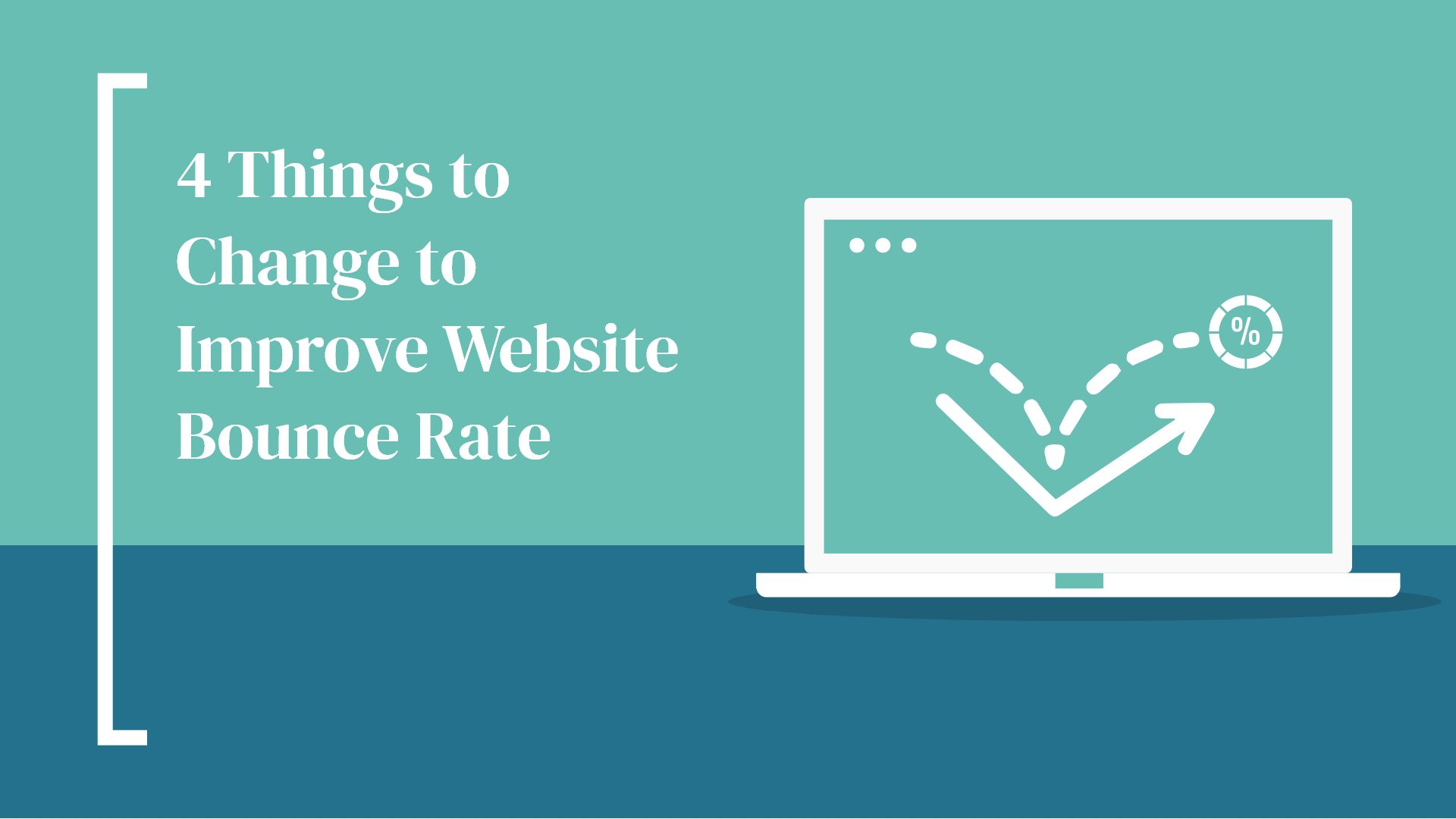Website analytics are a powerful tool that give great insights into your website. Analytics can help shape your marketing strategy and highlight issues that need attention. Sometimes the issues are obvious, like broken code that causes a page not to load correctly, but other times the issue can be far less obvious. These sneaking issues can stem from the structure of the website to the content on the page, but they can often be identified by the bounce rate of the page.
Website bounce rate is a measure of how many visitors leave your website immediately after viewing only one page. Put simply, bounce rate is how much time a visitor spends on your page, without taking action, before leaving. High bounce rates are a sign that your website isn’t providing an engaging and informative experience to your visitors. Here are some things you can do to improve your website’s bounce rate:
What Is a Good Bounce Rate?
The goal is not to be over 70% bounce rate on any page. A percentage of 41%–55% is about average and a great bounce rate is in the 26%–40% range. The caveats are that a very low score—which normally would be a good thing—can also be an indicator of not having any compelling content like engaging blog posts. So, being lower than 25% is also bad news.
There are a few ways that site bounce rate can be improved on the pages of your site, and they are all behind-the-scenes of your site:
Ensuring that your site has not only visual breaks and highlights in formatting but in the structure of the page as well helps to make it easier for visitors to find what they need. If they can find information easily, they’re more likely to stick around. These items include:
Formatting
In addition to making your site visually appealing and easy to navigate for visitors, good formatting is great for SEO. Each of these formatting items comes with its own code, which allows web crawlers to more easily analyze the information on the page.
Keywords
While keywords work primarily for SEO, that SEO plays into the duration of a visitor’s time as well. Good SEO from well-used keywords helps visitors to find your site and also find what information they need from it. Utilizing keywords as part of formatting is key for SEO and site visitors alike.
Functionality
While formatting lends itself to making your site visually appealing, making it easy for visitors to find the “next step” on your site is key. Being sure that the calls to action are clear and well-placed is key to retaining site visitors. A good rule of thumb is to always have a CTA in the top right of the screen, close to the exit button. In addition, there should be multiple places throughout your site that include strong CTAs. As the reader scrolls your home page, more and more information about your company is laid out. After each of those bursts of information, there should be a CTA asking them to take the next step.
Site Structure
Well-designed website structure is essential for users as well as search engines. A site built with mobile-first design means your site can be easily viewed via mobile device and that important information on the site is visible and prominent on the mobile view. In addition, Google Ranking Factors favor a site with a well-designed site map. This allows web crawlers to more easily analyze the site, which helps to boost SEO.
We Can Help
Wondering how your site can improve its bounce rate? Not even sure what your bounce rate is? Schedule a complimentary 30-minute consultation, and let’s talk through your questions and see how our services can support your business!

